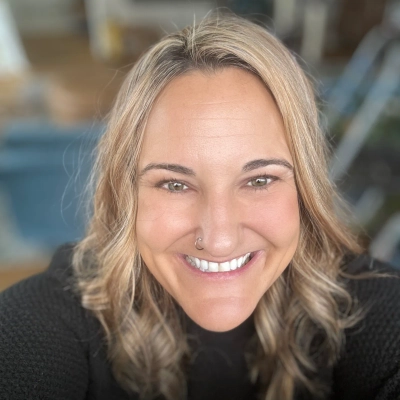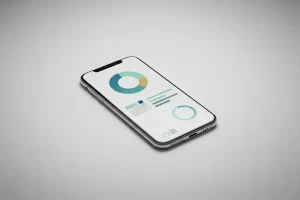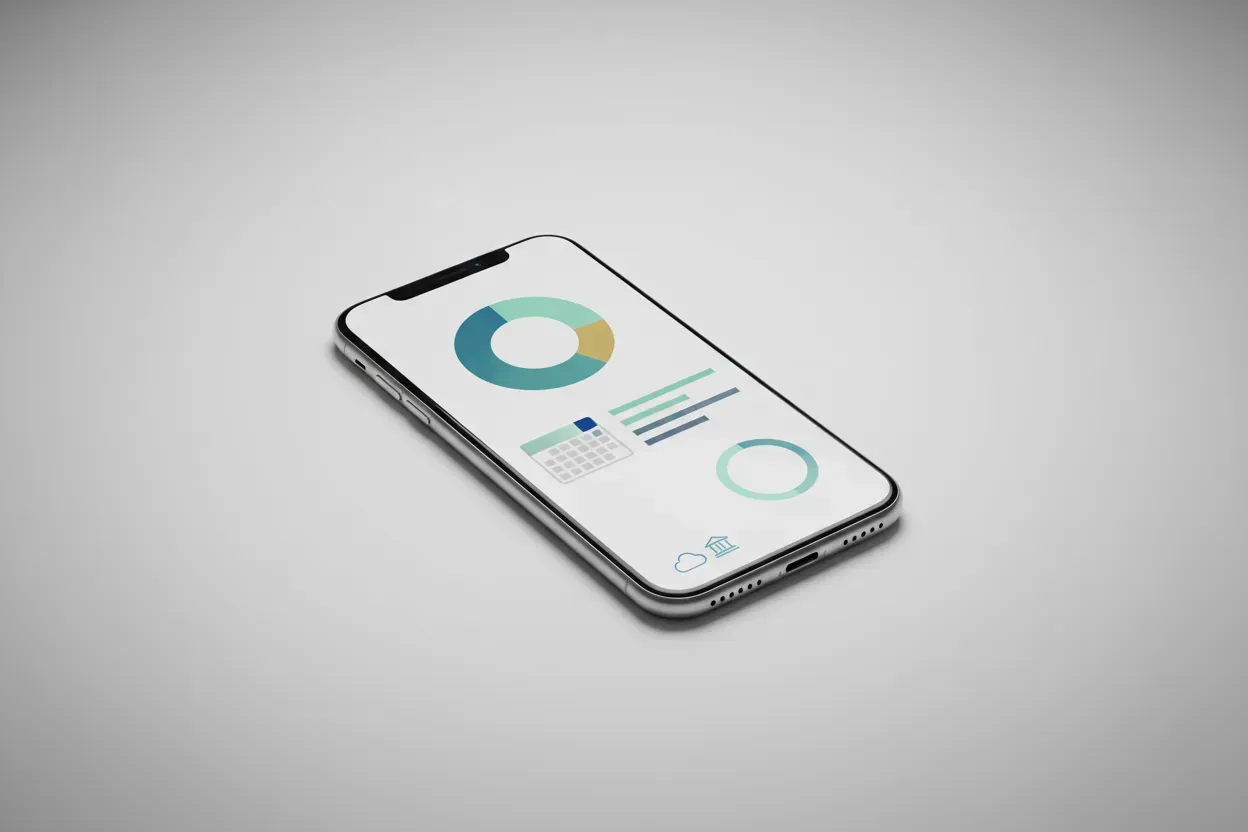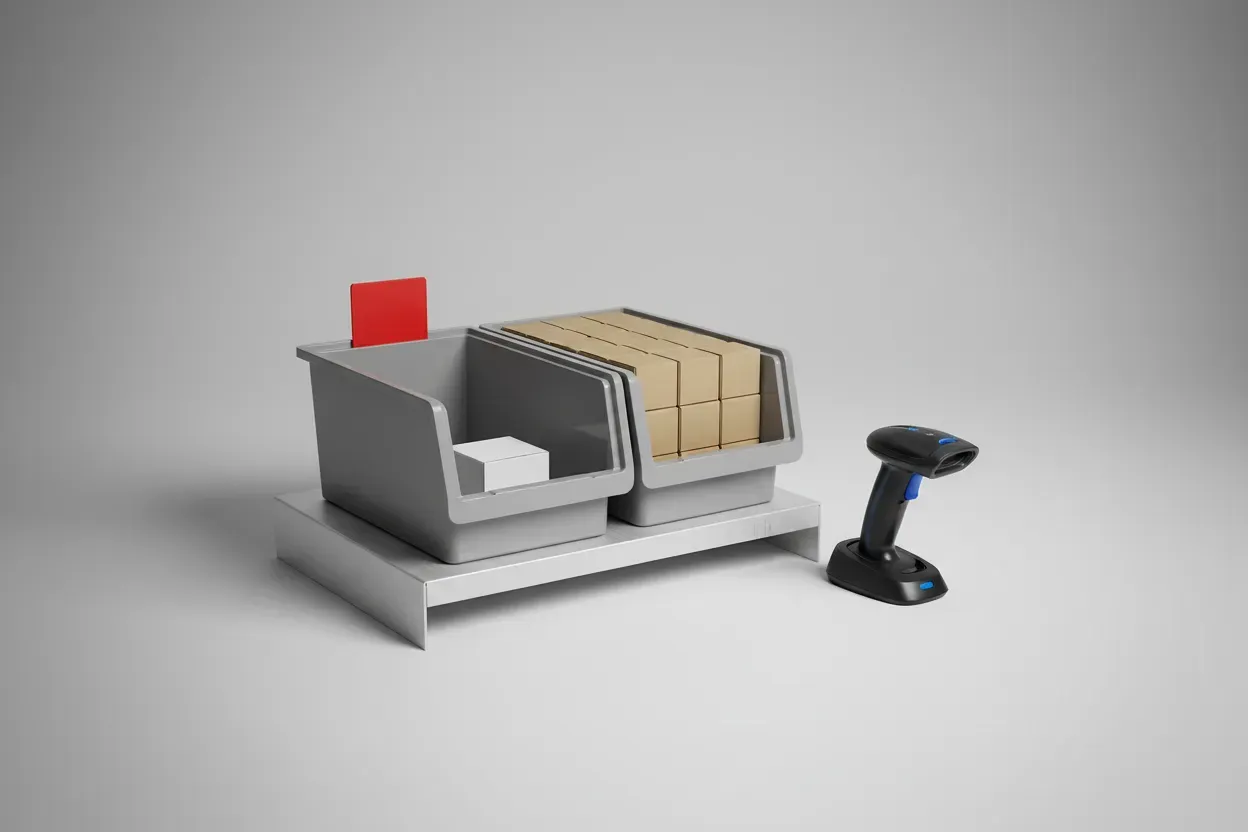How to Calculate & Use CLTV: Insights from Business Leaders
Customer Lifetime Value (CLTV) is a crucial metric that can revolutionize business strategies and drive growth. This comprehensive guide draws on the expertise of seasoned business leaders to unpack the complexities of CLTV calculation and application. From strategic decision-making to optimizing marketing spend, learn how to harness the power of CLTV across various aspects of your business operations.
- Calculate CLTV to Drive Strategic Decisions
- Segment Customers for Higher Lifetime Value
- Leverage CLTV to Optimize Marketing Spend
- Use CLTV to Refine Customer Retention
- Analyze CLTV by Channel for Better ROI
- Focus on High-Value Customer Acquisition
- Track Engagement Patterns to Boost CLTV
- Implement AI-Driven Donor Journey Mapping
- Model CLTV by Acquisition Source
- Understand Emotional Connection in CLTV
- Measure Launch Velocity CLTV for Tech
- Assess Revenue Quality Through CLTV
- Target Clients for Operational CLTV
- Nurture Creator Relationships for Higher CLTV
- Identify Engagement Decay Points in CLTV
- Increase CPA Based on High CLTV
- Track Guest Evolution Patterns in CLTV
- Refine Strategy with Segmented CLTV
- Align 3PL Selection with CLTV Potential
- Drive Early Integration for Higher CLTV
- Invest in Long-Term Client Relationships
- Prioritize High-Value Opportunities with CLTV
- Focus on Long-Term Resident Value
- Segment Customers to Maximize CLTV
- Inform Key Decisions with CLTV Data
Calculate CLTV to Drive Strategic Decisions
After 30 years in CRM consulting, I’ve seen businesses completely misunderstand CLTV by only looking at direct revenue. The real value comes from tracking what I call “process maturity multipliers”—how long-term clients evolve from basic CRM users to sophisticated data-driven operations.
At BeyondCRM, I measure CLTV by tracking client progression through capability stages. A client might start with simple sales pipeline tracking worth $20K annually, but after 18 months they’re investing in integrated marketing automation, advanced reporting, and Power Platform extensions totaling $80K+ yearly. Our longest client has been with us for over a decade, spending 400% more than their initial project.
The breakthrough insight was realizing that clients who stayed past the two-year mark became our most profitable segment. They require 60% less hand-holding per dollar spent and generate referrals with 3x higher close rates. This shifted our entire approach from chasing new logos to obsessing over client success milestones.
Now I personally review every client’s growth trajectory quarterly. When I see stagnation signals—like unchanged user counts or basic reporting usage—we proactively suggest capability expansions. This prevented 80% of potential churn last year and drove our industry-leading 2% project overrun rate because we’re not scrambling to replace revenue.
 Warren Davies
Warren Davies
Director & Owner, BeyondCRM
Segment Customers for Higher Lifetime Value
Customer Lifetime Value (CLTV) is most useful when paired with Customer Acquisition Cost (CAC). The formula—average purchase value times purchase frequency times lifespan—only becomes meaningful when it drives decisions about where to invest or cut back. Therefore, CLTV works best as a filter to evaluate the health of marketing channels and audience segments.
For example, a SaaS company offering a $49 per month tool was getting low CAC on Facebook, around $23 per person. That looked efficient at first. However, churn data showed most people stopped paying after two months. So CLTV was under $100. And after factoring in costs, there wasn’t much margin left.
In contrast, leads from content marketing converted slower but stuck around longer. Many stayed for over a year. Their CLTV was closer to $800. Even though CAC was higher at around $110, the returns were much better.
Because of that insight, the team shifted budget. They pulled spend from paid social and redirected it into SEO, email sequences, and long-form content. It took longer to see returns. But the LTV to CAC ratio improved significantly.
So they moved away from chasing cheap clicks. And focused on building acquisition funnels that created long-term value.
CLTV shows which parts of the business are sustainable. And which are burning cash. When a campaign or channel doesn’t lead to retention or margin over time, it’s a signal to change direction.
 Josiah Roche
Josiah Roche
Fractional CMO, JRR Marketing
Leverage CLTV to Optimize Marketing Spend
Having run ROI Amplified since 2017, I calculate CLTV by tracking conversion paths through our 24/7 live reporting dashboard and then multiplying average order value by purchase frequency and relationship duration. Most agencies stop at surface metrics, but I dig into the attribution data from our multichannel funnels to see which touchpoints actually drive repeat business.
One Tampa client in the marine services industry had a CLTV of $1,200 when we started working together. Through our Google Analytics setup, we found that customers who engaged with their blog content before converting had 3x higher retention rates. We shifted 40% of their ad spend from direct sales campaigns to content marketing, and their CLTV jumped to $2,800 within eight months.
The game-changer was implementing CRM automation that triggered different nurture sequences based on customer behavior patterns. Customers who clicked email links about maintenance tips generated $400 more lifetime revenue than those who only opened promotional emails. This insight led us to create separate content tracks for different customer segments.
Now I use CLTV data to set Google Ads bid strategies differently for new versus returning customer campaigns. If I know a customer segment has a $3,000 CLTV, I can justify spending $150 per conversion instead of the $50 limit we’d set based on initial purchase value alone.
 Zack Bowlby
Zack Bowlby
CEO, ROI Amplified
Use CLTV to Refine Customer Retention
After running RED27Creative for over 20 years, I calculate CLTV by tracking average client engagement duration (typically 18-24 months) multiplied by monthly retainer plus project fees, minus acquisition costs. But here’s what most agencies miss: clients who engage with our “Reveal Revenue” visitor identification service have 340% higher lifetime value than those using just traditional SEO or web design.
The breakthrough came when I started segmenting CLTV based on service combinations rather than individual clients. Clients using our integrated approach—combining SEO, visitor identification, and lead nurturing—averaged $47,000 in lifetime value versus $14,000 for single-service clients. This insight completely shifted how we structure our service packages.
I restructured our entire pricing model around this data. Instead of selling individual services, we now lead with our comprehensive “Reveal Revenue” solution that identifies anonymous website visitors, then layer in complementary services. This approach increased our average client lifetime value by 180% while reducing churn by 60%.
The real game-changer was finding that clients who see immediate ROI from visitor identification within their first 90 days extend their contracts an average of 14 additional months. Now I front-load every new client relationship with quick wins from our visitor identification technology, knowing it dramatically impacts their total lifetime value.
 Kiel Tredrea
Kiel Tredrea
President & CMO, RED27Creative
Analyze CLTV by Channel for Better ROI
After scaling PacketBase from zero to acquisition and now running Riverbase Cloud, I’ve learned that CLTV isn’t just about revenue per customer—it’s about the efficiency multiplier that comes from understanding your ideal customer profile deeply.
We track what I call “velocity CLTV”—measuring not just total customer value, but how quickly customers reach profitability and start expanding. Our best eCommerce clients typically hit 3x ROAS within 60 days, then scale to 5-7x within six months through our AI optimization.
This insight completely shifted our client selection process. Instead of chasing every lead, we now qualify prospects based on their readiness to implement and iterate quickly. A client willing to test three ad variations weekly will generate 4x more value than one who wants monthly reports and slow changes.
The data proved that high-velocity clients don’t just pay more—they provide better case studies, cleaner data for our AI models, and refer similar fast-moving businesses. Now we price higher upfront but deliver exponentially better results by working exclusively with clients who match this profile.
 Gary Gilkison
Gary Gilkison
CEO, Riverbase
Focus on High-Value Customer Acquisition
After managing marketing for a hotel development company for a decade, I learned that CLTV isn’t just about revenue—it’s about understanding the emotional connection customers have with your brand. I calculate CLTV by taking average annual spend and multiplying by retention rate, but then I factor in referral value since satisfied customers become brand evangelists.
At Ronkot Design, I found that clients who received personalized birthday cards and thank-you follow-ups had 40% longer relationships with us. These simple touchpoints cost us $15 per client annually but extended average project relationships from 18 months to 2.5 years. When your average client spends $8,000 annually, that extra year of retention is worth $8,000 minus the $15 investment.
This insight completely changed how I allocate our marketing budget. Instead of spending heavily on new client acquisition, I shifted 30% of our budget toward retention initiatives like exclusive client events and personalized communication campaigns. The data showed that retained clients were also 60% more likely to refer new business, effectively doubling their lifetime value when factoring in referrals.
I now use CLTV to determine which negative reviews deserve discount incentives. If a client’s calculated lifetime value is below $3,000, I focus on a genuine response rather than expensive retention offers. This prevents throwing money at low-value relationships while investing appropriately in high-value client recovery.
 Ronak Kothari
Ronak Kothari
Owner, Ronkot Design, LLC
Track Engagement Patterns to Boost CLTV
After scaling multiple companies to $10M+ revenue, I’ve learned that most businesses overcomplicate CLTV when the real goldmine is in the email data they’re already collecting.
For one of our Sierra Exclusive clients (a local dental practice), we tracked CLTV by monitoring email engagement patterns alongside appointment frequency. Patients who consistently opened our monthly newsletter had 3x higher treatment acceptance rates and stayed with the practice 40% longer than those who didn’t engage with emails.
The game-changer was segmenting our email campaigns based on this behavior. High-engagement patients received premium service promotions and referral incentives, while low-engagement ones received educational content about preventive care. This simple shift increased average patient value from $1,200 to $1,800 annually.
We applied this same approach across our client base – tracking which email sequences drove repeat purchases versus one-time buyers. The data showed that customers who completed our automated welcome series had 2.5x higher lifetime value, so we started investing heavily in perfecting those first few touchpoints rather than chasing new leads.
 Seth Gillen
Seth Gillen
Owner, Sierra Exclusive Marketing
Implement AI-Driven Donor Journey Mapping
I measure CLTV in the nonprofit space by tracking what I call “donor lifetime impact”—not just how much someone gives, but how their giving patterns evolve and multiply over time. At KNDR, I found that donors who engage through our AI-powered email sequences give 340% more in their second year compared to those who only receive basic thank-you emails.
The game-changer was realizing that donor retention compounds exponentially with the right technology stack. When we implemented automated donor journey mapping for one client, their monthly recurring donors jumped from 200 to 1,200 in six months. These recurring donors had an average CLTV of $2,400 compared to $180 for one-time givers.
This insight completely shifted how I allocate our AI resources. Instead of focusing solely on acquisition campaigns, I now dedicate 60% of our automation budget to nurturing existing donors through personalized content and strategic touchpoints. One client saw their donor retention rate hit 78% (industry average is 35%) just by implementing our donor lifecycle automation.
The math is brutal but clear: acquiring a new donor costs $87 on average, while re-engaging an existing donor costs $12. When I show nonprofits this CLTV breakdown, they immediately understand why our “800 donations in 45 days” guarantee focuses heavily on reactivating dormant supporters rather than chasing completely cold prospects.
 Mahir Iskender
Mahir Iskender
Founder, KNDR
Model CLTV by Acquisition Source
After reviewing thousands of business plans and financial models at Cayenne Consulting, I’ve seen most entrepreneurs calculate CLTV incorrectly—they focus on historical averages when they should be building bottom-up models based on customer behavior patterns. The real insight comes from segmenting customers by acquisition channel and engagement level, then modeling their cash flows month by month.
I had a restaurant client burning through cash with expensive local advertising campaigns. When we built their proper CLTV model, we found customers acquired through their hotel concierge program had 3x higher lifetime value ($450 vs $150) and stayed active 18 months longer than those from general advertising. The concierge customers also had 60% higher average order values and came back twice as often.
We immediately shifted 70% of their marketing budget from broad local ads to expanding their concierge partnerships and creating targeted takeout menu mailers for nearby hotels. Their customer acquisition cost dropped from $85 to $35, while average CLTV jumped to $380 across all channels.
The key was recognizing that acquisition source predicted behavior patterns better than demographics. Now when I review financial projections, I always push entrepreneurs to model CLTV by channel and use those numbers to guide their entire go-to-market strategy, not just retention efforts.
 Charles Kickham
Charles Kickham
Managing Director, Cayenne Consulting
Understand Emotional Connection in CLTV
After 20 years in senior living marketing, I calculate CLV by looking at monthly fees multiplied by average length of stay, then factoring in referral value since satisfied families often bring in additional residents. For independent living, we’re looking at $180K-$480K per resident, while CCRCs can exceed $500K—these numbers completely reshape how you think about acquisition costs.
The game-changer for my approach came when I realized that most communities were obsessing over cost per lead instead of focusing on direct leads that convert to higher CLV residents. We had one community spending $3,000 per resident on third-party leads, but those residents had 40% shorter stays compared to direct website inquiries. When your CLV is $300K+, paying more for quality direct leads that stay longer makes perfect sense.
This insight led me to completely flip our marketing strategy—instead of chasing cheap leads from aggregators, we invested heavily in content marketing and personalized nurture sequences that attracted families already aligned with the community’s values. The result was 60% higher conversion rates and residents who stayed significantly longer, proving that understanding true CLV means looking beyond just the initial move-in revenue.
I now structure entire marketing budgets around CLV segments, allocating more resources to channels that bring in residents with longer stays and higher satisfaction scores. When you know a memory care resident represents $85K-$242K in value, spending an extra $1,000 on personalized tours and family education suddenly becomes a no-brainer investment rather than a marketing expense.
 Jerry Gerald Vinci
Jerry Gerald Vinci
CEO, CCR Growth
Measure Launch Velocity CLTV for Tech
I’ve been in hospitality for over 20 years, and taking over Flinders Lane Cafe in May 2024 taught me that CLTV in cafes isn’t just about purchase frequency—it’s about ritual formation. I track how many days per week our regulars visit and their average spend, then multiply by retention patterns I’ve observed.
My biggest insight came from analyzing our “quick coffee” customers versus our “sit-down breakfast” crowd. The breakfast regulars who stay 30+ minutes generate 4x more lifetime value because they become daily visitors who bring friends and family. One regular started coming solo for morning coffee, then began bringing his partner for weekend brunches, and now hosts his monthly business meetings here.
This changed how I approach our seven-day kitchen expansion. Instead of just pushing higher-margin food items, I focus on creating comfortable spaces that encourage longer visits. I rearranged seating to include more communal tables and added power outlets—small changes that converted grab-and-go customers into stay-and-work regulars.
The real game-changer was recognizing that our most valuable customers aren’t necessarily our biggest spenders. Our CLTV champions are the ones who recommend us to others and post about us on social media—they’re worth 6x more than their personal spend suggests because they become unpaid brand ambassadors.
 Janice Kuz
Janice Kuz
Owner, Flinders Lane Cafe
Assess Revenue Quality Through CLTV
After launching tech products for companies like Robosen and Element U.S. Space & Defense, I’ve learned that traditional CLTV calculations miss the pre-launch investment multiplier effect. Most agencies bill clients once and move on, but I track the full product lifecycle value from initial launch through market expansion phases.
With Robosen’s Transformers line, our Elite Optimus Prime launch generated massive pre-orders and media coverage. But the real CLTV revelation came 8 months later when they brought us back for Buzz Lightyear, then started discussing their entire 2024 product roadmap. That initial client was worth 5x more than our original contract because we’d proven we could deliver both sales results and sustained brand momentum.
I now measure what I call “Launch Velocity CLTV”—tracking not just immediate campaign ROI but how successfully launched products create expansion opportunities. Clients who achieve 200%+ of their pre-order targets in the first launch almost always return for follow-up products within 12 months. This insight completely changed our pricing strategy from project-based to retainer-focused for high-potential tech launches.
The game-changer was building “momentum triggers” into our launch campaigns. Instead of just delivering assets and walking away, we embed performance tracking that shows clients exactly which elements drove their success. When Element’s website conversion rates jumped after our redesign, they immediately wanted us to optimize their entire digital ecosystem.
 Tony Crisp
Tony Crisp
CEO & Co-Founder, CRISPx
Target Clients for Operational CLTV
As a growth architect who has built and led global demand engines for companies like Sumo Logic and LiveAction, I view Customer Lifetime Value (CLTV) not just as a number, but as a reflection of revenue quality. We measure it by dissecting the true stickiness and durability of our recurring revenue.
This involves deeply analyzing retention metrics such as logo, gross dollar, and net dollar retention, along with customer satisfaction scores (NPS/CSAT). We also critically assess if our service is “bone” (mission-critical), “muscle” (important), or “fat” (nice-to-have), as “bone” products naturally command higher CLTV due to their indispensability.
This understanding directly influences our Go-to-Market and retention strategies. For “muscle” or “fat” offerings, our teams prioritize making the solution more integrated and proving constant, undeniable value to secure longer commitments and reduce churn. We also strategically structure contracts with longer durations and upfront payments to maximize the “bankability” of that revenue.
At Sumo Logic, for example, our focus on nurturing this quality ARR, beyond just top-line growth, was a cornerstone of our marketing-led programs that contributed 20% of total ARR and paved the way for the company to go public.
 Maurina Venturelli
Maurina Venturelli
Head of Gtm, OpStart
Nurture Creator Relationships for Higher CLTV
Through my private equity work at Garden City, I learned that most service businesses calculate CLTV incorrectly—they focus on contract value instead of operational impact. When I evaluate companies now, I track what I call “operational CLTV”—how much profit a customer generates after accounting for the real cost of serving them.
At Scale Lite, we found this with Valley Janitorial. Their “high-value” monthly contracts were actually their least profitable because they required constant owner intervention and generated 80% of customer complaints. After implementing our automation systems, we shifted their focus to mid-tier clients who became 40% more profitable with our streamlined processes.
This completely flipped our client acquisition strategy. Instead of chasing the biggest contracts, we now target businesses where our automation creates the highest profit multiplier. A $50K automation investment for a client often opens up $200K+ in operational efficiency, making their ideal customer profile completely different than they originally thought.
The data showed us that customers who accept our full tech stack stay around 60% longer and refer 3x more business. Now we actually qualify prospects based on their willingness to modernize operations, not just their budget size.
 Keaton Kay
Keaton Kay
Founder & CEO, Scale Lite
Identify Engagement Decay Points in CLTV
At Open Influence, we track CLTV differently than most agencies—we measure the lifetime value of creator relationships, not just client contracts. When we identify high-performing influencers who consistently deliver strong ROI for our fashion and beauty clients, those creators become long-term assets worth 3-5x their initial campaign value.
Here’s the game-changer: we found that micro-influencers who perform well in their first campaign with us generate 40% higher engagement rates in subsequent collaborations. Their audiences become familiar with seeing our client brands, creating compound trust effects that traditional advertising can’t replicate.
This insight completely transformed our influencer selection process. Instead of constantly hunting for new creators, we now invest in nurturing our top-performing micro-influencers with better rates and exclusive partnerships. One creator who started with a $500 campaign for an athleisure brand has now generated over $50,000 in tracked conversions across multiple campaigns.
We also use CLTV data to educate clients on creator retention budgets. Brands that maintain relationships with their best-performing influencers see 60% better campaign performance compared to those who constantly rotate new faces. This data helps us secure longer-term contracts and build sustainable creator programs rather than one-off campaigns.
 Maria A. Rodriguez
Maria A. Rodriguez
VP, Comms and Marketing, Open Influence
Increase CPA Based on High CLTV
After two decades of helping businesses grow, I’ve learned that CLTV isn’t just about math—it’s about understanding human behavior patterns. Most consultants focus on revenue calculations, but I track what I call “engagement decay points” where customers naturally drift away.
Working with a tech startup client, I found their CLTV dropped 40% after month three because they stopped providing educational content once onboarding finished. We implemented a simple quarterly “optimization audit” email series that kept customers engaged longer. Their average customer lifespan jumped from 8 months to 14 months, directly impacting their funding discussions.
The game-changer was tracking micro-behaviors that predict churn before it happens. When customers stop opening emails for 21 days or skip two consecutive product updates, their lifetime value plummets. I now advise clients to trigger re-engagement campaigns at these specific trigger points rather than waiting for obvious signs of dissatisfaction.
This approach completely changed how I structure client retainers. Instead of monthly fees, I now offer quarterly packages aligned with natural customer lifecycle stages. It’s increased my own client retention by 60% because the payment schedule matches when businesses actually see results and make renewal decisions.
 Chris Robino
Chris Robino
Digital Strategy Leader, Chris Robino
Track Guest Evolution Patterns in CLTV
We measure Customer Lifetime Value (CLTV) by combining a customer’s average purchase value, purchase frequency, and average lifespan. This helps us estimate how much revenue a business can expect from a typical customer over time. For subscription-based clients, we also factor in churn rates and upsell opportunities to get a more accurate picture. CLTV is crucial because it guides how much we can afford to spend on acquiring new customers while still remaining profitable.
For example, one client selling high-end B2B software had a CLTV over £20,000 per customer. Once we calculated this, we were able to increase the allowable cost-per-acquisition (CPA) across Google and LinkedIn Ads. This let us bid more aggressively on high-intent keywords and target senior decision-makers without worrying about short-term returns. We also used CLTV insights to develop a customer retention strategy, offering loyalty perks and onboarding content to extend the customer lifespan. By focusing on value over volume, we improved both customer retention and long-term profitability.
 Philip Young
Philip Young
CEO, Bird Digital Marketing Agency UK
Refine Strategy with Segmented CLTV
Growing Detroit Furnished Rentals from individual room rentals to full units taught me that CLTV isn’t just about booking frequency—it’s about guest evolution patterns. I found that guests who initially book our sub-$50 rooms and have positive experiences return within 6 months for our premium loft units at 3x the price.
My breakthrough came when I started tracking “upgrade velocity”—how quickly budget guests moved to higher-tier properties. Corporate clients and traveling nurses who started with basic accommodations generated 340% higher lifetime value than one-time luxury bookers. The data showed that our $50 rooms weren’t just filling vacancy—they were qualifying future high-value customers.
This insight completely flipped our pricing strategy. Instead of eliminating budget options to focus on premium bookings, I now use affordable units as loss leaders to capture and nurture long-term relationships. We maintain 100% occupancy on budget rooms while building a pipeline of guests who consistently book our $150+ lofts for extended stays.
The compound effect hits hard in our industry—retained guests bypass booking platforms entirely, saving us 15% commission fees while providing guaranteed occupancy during Detroit’s seasonal fluctuations. When traveling nurses book direct for 3-month assignments after experiencing our service, that’s pure profit margin improvement.
 Sean Swain
Sean Swain
Company Owner, Detroit Furnished Rentals LLC
Align 3PL Selection with CLTV Potential
At Supademo, we don’t just track CLTV (Customer Lifetime Value) overall. We break it down by user segment. Analyzing LTV across job roles, use cases, and feature adoption helps us determine which types of customers are more loyal and valuable over time.
One observation we made was that users in customer success or sales engineering roles who actively use our advanced features, such as HTML interactive demos or sandbox demos, tend to fall into the highest LTV bracket. This insight allows us to refine our targeting and enhance our retention strategy. We focus on activating those segments, and for lower-LTV segments, we concentrate on providing nudges or education that might help them derive more value and maintain longer relationships with us.
For us, CLTV is not just a financial metric. It provides a clear signal on the kind of users we should attract, support, and grow with.
 Fredo Tan
Fredo Tan
Head of Growth, Supademo
Drive Early Integration for Higher CLTV
Customer Lifetime Value (CLTV) is one of the most revealing metrics in our toolkit. At its core, we measure CLTV by analyzing average order value, purchase frequency, retention period, and profit margins. The formula I’ve found most effective is: CLTV = (Average Order Value × Purchase Frequency × Average Customer Lifespan) × Profit Margin.
What makes this metric powerful isn’t just the calculation—it’s how we use it to make strategic decisions. For eCommerce businesses working with 3PLs, understanding CLTV completely transforms how you approach both acquisition and retention.
Early in my entrepreneurial journey, I learned this lesson the hard way. At one of my previous companies, we were seeing solid top-line revenue, but our CLTV wasn’t moving in the right direction. We were acquiring customers efficiently, but retention was abysmal. Our marketing budget was primarily focused on acquisition rather than nurturing existing relationships.
When we finally segmented our customer base by lifetime value, the data told a clear story: our highest-value customers shared specific characteristics and had distinct fulfillment needs—faster shipping, premium unboxing experiences, and flawless order accuracy. These weren’t just preferences; they were retention drivers.
We pivoted our strategy dramatically. Instead of treating all customers equally, we allocated resources proportionally to CLTV potential. We revamped our 3PL selection process to prioritize providers who excelled at those retention-driving services for our high-value segments. The result? A 47% increase in repeat purchase rate among our top-tier customers within just six months.
Now at Fulfill.com, we help eCommerce brands make similar data-driven decisions. When matching businesses with 3PL partners, we consider not just current needs but how the right fulfillment experience can maximize CLTV. The right 3PL isn’t merely a cost center—it’s a strategic partner in building customer lifetime value.
Remember: in eCommerce, acquisition gets you the first sale, but your fulfillment experience often determines whether you’ll get the second, third, and beyond. That’s where the real value lies.
 Joe Spisak
Joe Spisak
CEO, Fulfill.com
Invest in Long-Term Client Relationships
At Lessn, we measure Customer Lifetime Value (CLTV) by analyzing a combination of recurring revenue per customer, gross margin, and average customer lifespan. Since we operate on a transparent pricing model tied to transaction volume, we can project CLTV fairly accurately based on early usage patterns and historical retention data. This allows us to align our acquisition costs and onboarding investments with long-term revenue expectations, ensuring we maintain healthy unit economics as we scale.
Understanding CLTV has directly influenced how we approach both marketing and retention. For example, when we discovered that customers who integrate Lessn with their accounting software within the first 14 days tend to have a significantly higher CLTV, we restructured our onboarding process to drive early integration. We also shifted marketing spend toward industries with longer payment cycles and higher transaction volumes—like construction and professional services—where our platform delivers the most value and where CLTV is predictably higher. This insight has helped us grow more efficiently while deepening customer engagement.
 David Grossman
David Grossman
Founder & Chief Growth Officer, Lessn
Prioritize High-Value Opportunities with CLTV
As the Founder and CEO of ChromeQA Lab, customer lifetime value (CLTV) is one of the most important metrics I use to shape both our strategic roadmap and tactical execution. For us, CLTV is calculated by assessing the average revenue generated per client, multiplied by their average engagement duration, and adjusted for gross margin. Since our services are recurring and often project-based, we track not just the initial deal size, but also re-engagement frequency, cross-service expansion, and long-term upsells into dedicated QA teams.
What this metric really helps us do is move away from transactional thinking. When we realized that clients retained over a 12-month period generated 3-4x more revenue than one-off projects, we began investing more into our Client Experience Framework. That included proactive check-ins, tailored test audit reports, and offering quarterly roadmap reviews, often at no additional cost.
Our marketing approach evolved, too. We stopped chasing every inbound lead and began focusing on those with strong long-term fit: industries we specialize in, tech stacks we can scale with, and teams open to collaborative engagement. That shift was entirely driven by what CLTV was telling us.
A great example of this was an e-learning platform that came to us for a one-time mobile automation project. Based on early engagement signals and our CLTV model, we assigned a hybrid QA team and preemptively added API and load testing support. That decision led to a 3-year partnership spanning five product lines. CLTV didn’t just guide retention; it fundamentally changed how we market, scope, and staff our delivery teams.
 Shishir Dubey
Shishir Dubey
Founder & CEO, Chrome QA Lab
Focus on Long-Term Resident Value
Customer Lifetime Value (CLTV) is a powerful indicator of where to focus sales and marketing efforts. It’s not about the number of leads—it’s about the quality.
One high-value client can translate into years of meaningful engagement and growth, while another may be a short-term project with limited impact.
Understanding CLTV helps prioritize which opportunities to pursue. When the pipeline is filled with clients who bring higher lifetime value, it creates a stronger foundation for long-term organizational growth.
 Chaitanya Sagar
Chaitanya Sagar
Founder & CEO, Perceptive Analytics
Segment Customers to Maximize CLTV
We discovered early that not all leases are equal. Some residents stay for several years, refer friends, and bring in much more value than others. We stopped treating everyone the same.
We calculated Customer Lifetime Value (CLTV) using average lease duration, renewal rates, referral impact, and extra revenue from parking and pet fees. In student housing, where leases renew every 12 months, we added retention likelihood by cohort—freshmen, transfers, and graduate students. This gave us a clearer value by persona.
At a mid-sized student apartment complex near a southern university, the CLTV for freshmen who renewed and referred at least one friend was 2.3 times higher than for seniors who signed only once. That insight completely changed our focus.
Instead of spending heavily on flashy lease-up campaigns aimed at seniors for short-term fill, we redirected 40% of our budget toward freshmen. We focused on move-in giveaways, referral contests, and email campaigns tied to renewal periods. We also changed our messaging to focus on long-term community and campus life. Instead of saying “available now,” we highlighted “your home for four years.”
That change paid off. Renewal rates rose by 18%. The average lease length increased from 1.2 to 1.6 years, and we cut cost-per-lease by 22% in the next cycle. CLTV became more than a KPI. It changed how we valued residents, targeted marketing, and measured campaign ROI. We stopped chasing volume. Instead, we focused on building long-term value.
 Armen Davtyan
Armen Davtyan
Head of SEO, Market Apartments
Inform Key Decisions with CLTV Data
As a data analyst, I have helped many of my clients to calculate CLTV (Customer Lifetime Value). You calculate this by dividing your revenue by the number of clients. This gives you the average amount of money that an average client spends with you over their lifetime.
Understanding your CLTV helps to inform a lot of decisions:
1. You can then segment your customer base in many ways and calculate CLTV for every segment. This helps to find the segment with the highest CLTV. You can therefore be intentional about attracting the right type of customers for you.
2. You can compare your CLTV with the customer acquisition cost to figure out how much extra you can spend on acquiring each customer.
3. It helps to understand how much extra you can afford to spend to retain an average customer and how much extra revenue on average you will make from these retention efforts.
 Eugene Lebedev
Eugene Lebedev
Managing Director, Vidi Corp LTD







































